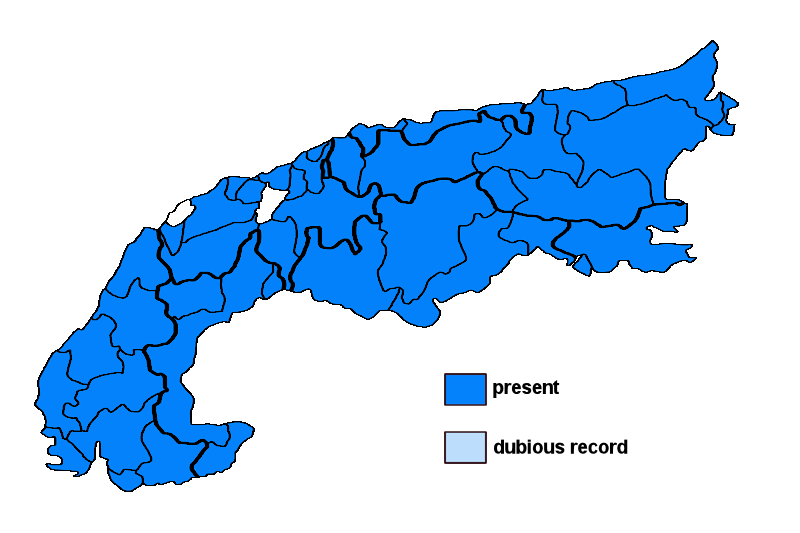Physcia stellaris (L.) Nyl.
Syn.: Hagenia stellaris (L.) De Not., Lichen stellaris L., Parmelia stellaris (L.) Ach., Physcia aipolia (Ehrh. ex Humb.) Fürnr. var. ambigua (Ehrh.) H. Olivier
Lichenised.
Substrate: bark, lignum, siliceous rocks
Altitudinal range: from the submediterranean/colline belt (potential vegetation: mixed deciduous forests dominated by Quercus and Carpinus) to the subalpine belt (potential vegetation: open, taiga-like forests dominated by Larix decidua and/or Pinus cembra and Rhododendron)
Note: a (cool-) temperate to southern boreal-montane, circumpolar lichen of isolated trees. Ph. biziana, Ph. aipolia and Ph. stellaris, although often overlapping in their altitudinal distributions, are altitudinal vicariants in the Alps, Ph. stellaris has the optimum in and above the beech-belt, and is the most ""continental"" of the three species; widespread and common throughout the Alps.
Austria: Vorarlberg; Tirol; Salzburg; Kärnten; Steiermark; Oberösterreich; Niederösterreich (incl. Wien); Burgenland; Germany: Oberbayern; Schwaben; Switzerland: Appenzell; Bern; Glarus; Graubünden; Luzern; St. Gallen; Schwyz; Ticino; Unterwalden; Vaud; Valais; France: Alpes-de-Haute-Provence; Haute-Alpes; Alpes-Maritimes; Drôme; Isère; Savoie; Haute-Savoie; Vaucluse; Var; Italy: Friuli; Veneto; Trentino Alto Adige; Lombardia; Piemonte; Valle d'Aosta; Liguria; Slovenia: Alpine and Pre-Alpine Slovenia; Trnovsky Gozd; Liechtenstein





